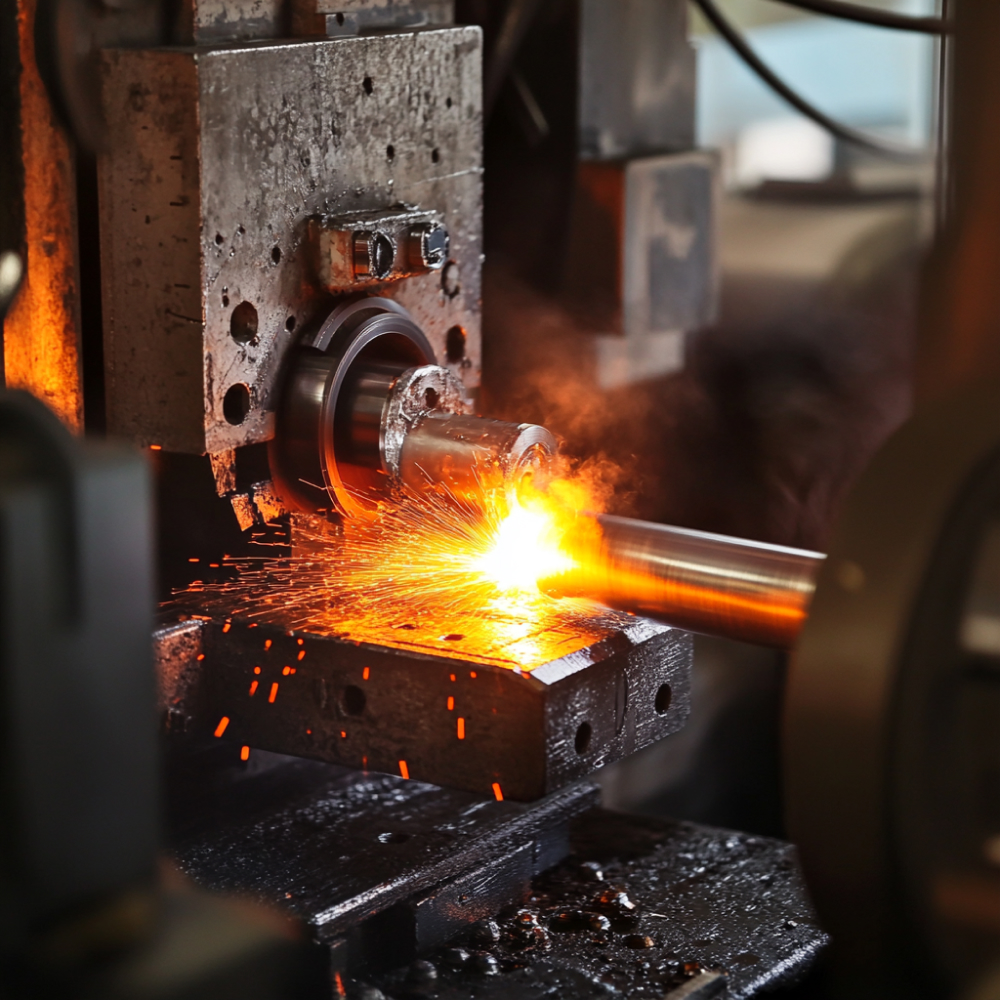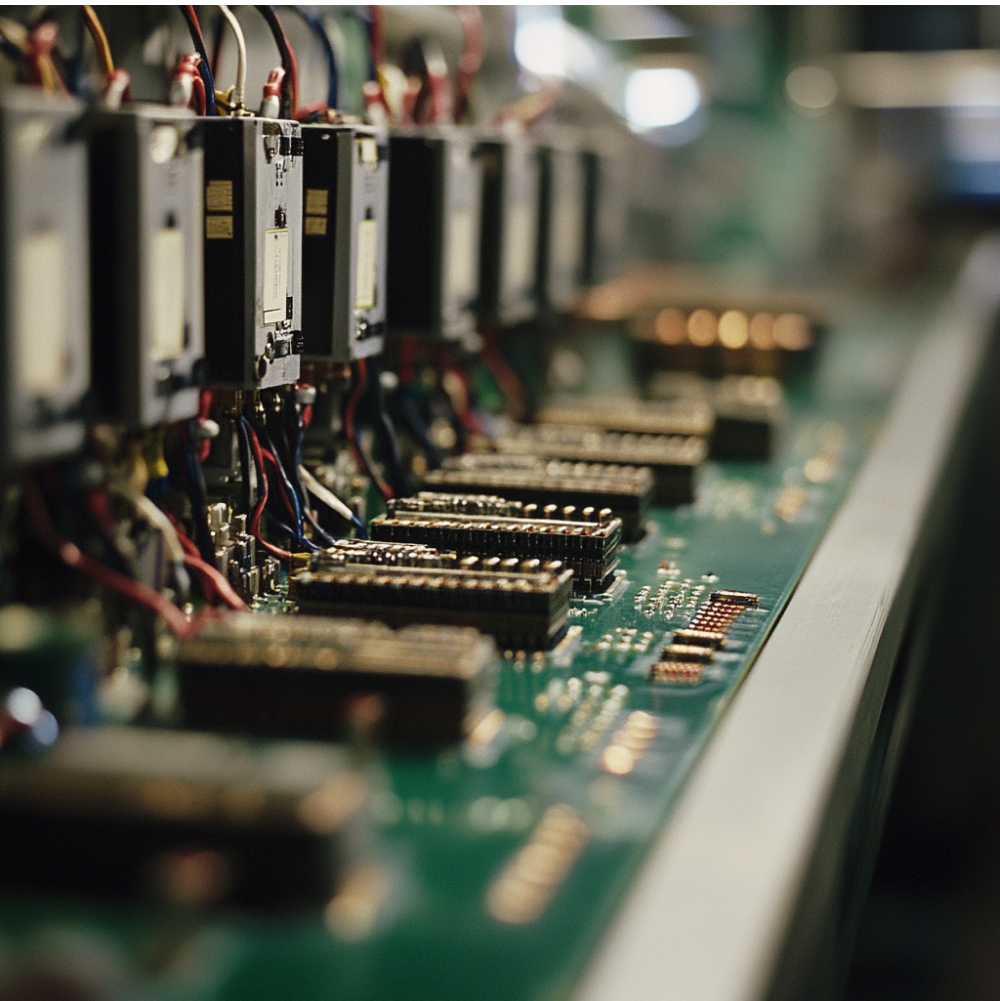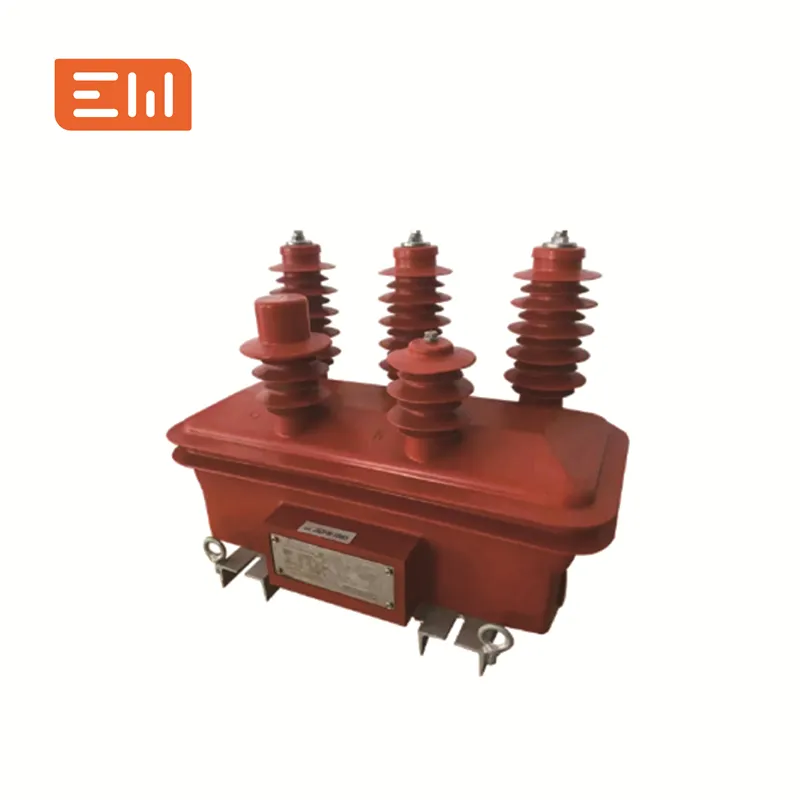What are Voltage Transformers? Fun Facts About Power for Lights!
Hi guys! Ever wonder why tiny garden lights or cool LED strips don't use the same big power (high voltage levels) as your TV or kitchen appliances? It's because they rely on a crucial intermediary device! We're talking about voltage transformers, specifically the step-down variety designed to lower electrical voltage for safe and efficient use in various lighting systems.
These components are fundamental to modern lighting design, enabling the safe operation of everything from subtle indoor accent lighting to extensive outdoor landscape illumination. Ready to become a low-voltage lighting whiz? Let's delve into the world of these neat gadgets in a super easy-to-understand way, exploring what they do, why they're essential, the different types available, and how to choose and install them correctly.
What Does a Low Voltage Transformer Do? The Basics

Think of the standard electricity flowing through your home's wiring (the line voltage, typically 120V or 240V depending on your region) like water rushing forcefully from a large fire hose. Many modern lighting fixtures, especially delicate LEDs or specialized bulbs, are like small garden sprinklers – they simply can't handle that immense pressure; they'd be damaged or destroyed instantly. They require a much gentler, lower-pressure flow (lower voltage) to operate correctly.
A low voltage transformer acts as a pressure regulator for electricity. It takes the incoming high-voltage power and safely "steps it down" to a much lower, more manageable voltage (commonly 12V or 24V). This transformation protects sensitive lighting components, ensuring they function as intended, achieve their expected lifespan, and operate safely.
Why Are They Absolutely Necessary?
The widespread adoption of low-voltage lighting solutions, particularly energy-efficient LEDs, charming outdoor path lights, deck lights, and under-cabinet fixtures, makes these transformers indispensable. They bridge the gap between the standard utility power supply and the specific requirements of these fixtures. Using the correct transformer, such as a dedicated low voltage lighting transformer, is not just recommended; it's crucial for several reasons:
- Functionality: Low-voltage lights simply won't work correctly, or at all, if connected directly to line voltage.
- Longevity: Supplying the precise voltage prevents premature burnout and extends the life of bulbs and LED modules significantly.
- Performance: Stable, correct voltage prevents issues like flickering, ensures consistent brightness, and maintains accurate color temperature.
- Energy Efficiency: By enabling the use of low-power LEDs, transformers contribute to overall energy savings in a lighting system.
- Safety: Reducing the voltage significantly lowers the risk associated with electrical shock, especially critical in outdoor or damp environments.
In essence, the transformer is a fundamental component ensuring the safety, efficiency, and reliability of any low-voltage lighting installation.
Exploring Different Types of Voltage Transformers for Lighting
While the basic function is voltage reduction, not all transformers are created equal. The massive high-voltage transformers used by utility companies in substations operate on a vastly different scale. For residential and commercial lighting applications, we primarily encounter smaller, step-down transformers. Understanding the common types of voltage transformers helps in selecting the right one:
-
Magnetic Low Voltage (MLV) Transformers: These are the traditional workhorses, utilizing copper wire coiled around a laminated steel core (the primary winding receives input voltage, the secondary provides output).
- How they work: Simple electromagnetic induction. Reliable and robust.
- Pros: Highly durable, less sensitive to power surges, often have long lifespans and excellent warranties (sometimes even a lifetime warranty). Generally compatible with a wider range of fixtures.
- Cons: Larger, heavier, can produce a slight audible hum, potentially less energy efficient, dimming LEDs might require specific compatible dimmers and can sometimes be less smooth than ELV.
- Best for: Robust outdoor installations, situations where slight hum isn't an issue, non-dimmed or MLV-compatible dimmed applications.
-
Electronic Low Voltage (ELV) Transformers: These employ modern solid-state electronic circuitry to achieve voltage conversion, often involving high-frequency switching.
- How they work: Use electronics (transistors, capacitors) to convert voltage, often outputting high-frequency AC or DC.
- Pros: Compact, lightweight, silent operation, generally more energy efficient, typically provide smoother, flicker-free dimming performance with compatible LEDs and ELV dimmers. Internal electronics often rely on stable capacitor voltage for clean output.
- Cons: Can be more sensitive to voltage spikes, heat, and electrical noise. Potentially shorter lifespan than high-quality MLV units. Stricter compatibility requirements with dimmers and fixtures are crucial.
- Best for: Indoor applications, especially where silent operation and smooth LED dimming are priorities. Critical to match with compatible ELV dimmers and LED fixtures.
-
Specific Landscape Lighting Transformers: These are purpose-built for the rigors of outdoor use, often using MLV technology for durability but with added features.
- Features: Robust, weatherproof enclosures (NEMA 3R rated or similar) to protect internal components from moisture, dust, and insects. Must possess a high insulation level. Often include multiple voltage taps (e.g., 12V, 13V, 14V, 15V) to compensate for voltage drop over long wire runs, built-in timers, photocells for automatic dusk-to-dawn operation, and overload/short-circuit protection (breakers or fuses).
- Best for: All outdoor landscape lighting transformers needs – path lights, spotlights, deck lights, etc.
- Integrated LED Drivers: While technically power supplies, these often function similarly to ELV transformers but are specifically designed for certain LED fixtures or strips, converting AC line voltage to the precise low-voltage DC required by the LEDs. They are not usually interchangeable general-purpose transformers.
Leading electrical manufacturers like Schneider Electric, along with specialized companies such as EnweiElectric, offer a comprehensive range of these various lighting transformers to suit diverse needs.
Dedicated Lighting Transformers and Integrated Systems

Many modern lighting systems are designed with integrated power supplies. Under-cabinet puck lights, linear LED strips, and some track lighting systems often come with or require a specific, matched transformer (or "driver" for LEDs). This ensures compatibility and optimal performance, simplifying installation for the end-user. These dedicated units are precisely engineered to deliver the stable, clean power required by the specific light source.
Powering Energy Efficient LED Lights: A Critical Match
LEDs (Light Emitting Diodes) have revolutionized lighting with their incredible energy efficiency and long lifespans. However, they are semiconductor devices and are particularly sensitive to incorrect voltage and power fluctuations. Using the *correct* type and capacity of transformer is paramount for LED installations.
An appropriate transformer (often ELV for smooth dimming, though compatible MLV systems exist) provides the stable, regulated low voltage that LEDs thrive on. This prevents flickering, ensures they reach their maximum potential lifespan (often tens of thousands of hours), and maintains consistent brightness and color output. Conversely, connecting LEDs to an incompatible or poor-quality power supply is a recipe for disaster, leading to rapid failure, poor performance, and wasted investment. Always check LED fixture specifications for compatible transformer types (MLV/ELV/Driver) and dimming requirements.
How Transformers Work (Simplified Science!)
The process isn't magic, but rather clever physics based on the principle of electromagnetic induction. Inside a typical magnetic transformer, the process unfolds like this:
- Incoming higher voltage AC (Alternating Current) electricity flows into the first coil of wire, known as the primary winding.
- This alternating current creates a constantly changing magnetic field within the laminated metal core that links the two windings.
- This fluctuating magnetic field "induces" (creates) a new alternating current in the second coil of wire, the secondary winding.
- Crucially, the voltage of this induced current is determined by the ratio of wire turns (wraps) between the primary and secondary windings – the voltage ratio. For a step-down transformer, the secondary winding has significantly fewer turns than the primary winding.
- This difference in turns results in a lower output voltage from the secondary winding, which then powers your low-voltage lights.
Electronic transformers use semiconductor components (like transistors and capacitors) to achieve a similar voltage reduction, often converting the AC input to high-frequency AC or DC (Direct Current) depending on the design and intended load. This process allows them to be much smaller and lighter. This is the fundamental way these devices convert potentially hazardous high input voltage into a safe, usable low voltage suitable for specialized lighting.
Selecting the Right Transformer for Your Lighting Project

Choosing the correct power supply is arguably the most critical step for a successful, safe, and long-lasting low-voltage lighting installation. Overlooking these factors can lead to poor performance, damaged equipment, or safety hazards. Consider these key points meticulously:
- Required Output Voltage (V): Non-negotiable! Check the specs on your lights (e.g., "12V AC," "24V DC"). The transformer's output *must* match. Mismatching damages components.
- Total Power Load (Wattage - W): Add up the wattage of ALL lights on the circuit. Find this on bulbs/fixtures.
- Transformer Capacity (VA or Watts): Choose a transformer rated significantly *higher* than your total load. Rule of Thumb: Load to only 70-80% of capacity. (Example: 80W load needs at least a 100W/100VA transformer). This prevents overheating and extends life. VA (Volt-Amps) is roughly equivalent to Watts for typical lighting loads.
- Transformer Type (MLV vs. ELV): Match to your lights (LED, Halogen), dimming needs, and environment. Review the pros and cons mentioned earlier.
- Location Rating (Indoor/Outdoor): Use *only* outdoor-rated (NEMA 3R, IP65+) transformers for outdoor lights or damp locations. Indoor units must stay dry.
- Dimming Compatibility: Crucial! Ensure the dimmer, transformer (MLV/ELV), and lights/bulbs are *all* listed as compatible by their manufacturers. Incompatibility causes flickering, buzzing, or failure.
- Voltage Drop Compensation (Especially Outdoors): For long wire runs (common in landscape lighting), voltage decreases along the wire. Choose a transformer with multiple voltage taps (e.g., 12V, 13V, 14V, 15V) to boost the initial voltage, ensuring lights furthest away still receive adequate power. Use appropriate gauge wire based on distance and load.
- Physical Size and Ventilation: Ensure it fits the installation space with adequate airflow around it. Transformers generate heat!
Safety During Installation (Paramount!)
Working with any electrical circuit demands respect and caution. Safety must always be the top priority. If you are ever unsure, hire a licensed electrician.
- Turn Power OFF Completely!: Before starting, locate the correct circuit breaker in your main panel (circuit breakers) and switch it OFF. Verify power is off at the work location with a reliable voltage tester.
- Read ALL Instructions: Meticulously follow manufacturer instructions for the transformer, fixtures, and any controls (dimmers, timers).
- Secure Connections: Use appropriate connectors (wire nuts, terminal blocks) for tight, secure connections. No exposed copper. Use waterproof connectors outdoors.
- Proper Grounding: Connect grounding wires as per instructions and local codes. This is a critical safety feature.
- Code Compliance: Adhere to local electrical codes for wiring methods, burial depths (outdoors), transformer placement, and junction boxes. Codes exist for safety.
- Protect Wiring: Shield low-voltage wires outdoors from damage (e.g., from shovels, edgers). Bury direct-burial cable to the required depth or use conduit where necessary.
- Don't Overload: Double-check your wattage calculations and transformer capacity (the 70-80% rule).
Troubleshooting Common Low Voltage Lighting Issues
Even with careful installation, problems can sometimes arise. Here are some common issues and potential causes:
- Flickering Lights: Loose connections (check *all* points), incompatible dimmer/transformer/LED combo, overloaded transformer, significant input voltage fluctuations, sometimes poor quality LEDs.
- Transformer Overheating: Usually overloading (too much wattage). Check load vs. capacity (use 70-80% rule). Ensure adequate ventilation. Could also indicate an internal fault.
- Some/All Lights Not Working: Check breaker/fuse in panel AND on transformer (if equipped). Check all connections. Test transformer input/output voltage. Check for failed bulbs/fixtures. Check for wire damage (especially outdoors). Consider voltage drop on long runs.
- Excessive Humming (MLV): Loud buzzing often indicates overload or an internal fault. A very faint hum might be normal.
- Dim Lights (Especially at End of Run): Likely voltage drop. Use a heavier gauge wire, shorten the run, split the load into multiple runs, or use a higher voltage tap on the transformer if available. Ensure transformer isn't overloaded.
Frequently Asked Questions (FAQ)
-
Q: Can I use any transformer with my LED lights?
A: No. LEDs are sensitive. You must use a transformer (or driver) compatible with your specific LEDs. Check if they require MLV, ELV, or a specific DC driver, and ensure voltage/wattage match. Dimming requires further compatibility checks between all components. -
Q: What's the difference between Watts (W) and Volt-Amps (VA)?
A: For simple resistive loads like old incandescent bulbs, they are nearly identical. For transformers and electronic loads (like LEDs/drivers), VA represents the "apparent power" and Watts the "true power." Due to efficiency losses (power factor), VA rating is often slightly higher than Watt rating. It's safest to ensure your total load wattage doesn't exceed 80% of the *lower* of the transformer's VA or Watt rating if both are listed. Often, for lighting, they are used interchangeably, but respecting the 80% rule covers most scenarios. -
Q: How far can I run low voltage wire?
A: It depends on the wire gauge, total wattage load, and voltage (12V or 24V). Higher voltage (24V) experiences less voltage drop than 12V. Heavier gauge wire (lower number, e.g., 10 or 12 AWG) carries power further with less drop than lighter wire (e.g., 16 or 18 AWG). There are online calculators and charts to help determine maximum run length for acceptable voltage drop (usually aim for less than 10% drop). -
Q: Do I need an electrician to install low voltage lighting?
A: While the low voltage side (after the transformer) is generally safer to work with than line voltage, installing the transformer itself (connecting it to 120V/240V) often requires electrical knowledge and adherence to code. Many jurisdictions legally require a licensed electrician for any line-voltage work. For safety and compliance, hiring an electrician is highly recommended, especially for the transformer connection and any complex layouts.
Advantages of Utilizing Low Voltage Lighting Systems
Employing low voltage power, facilitated by appropriate lighting transformers, offers numerous compelling advantages:
- Enhanced Safety: Significantly reduced shock risk compared to line voltage, crucial for outdoor/damp locations.
- Greater Energy Efficiency: Enables use of highly energy efficient LEDs, saving money and resources.
- Longer Fixture/Bulb Life: Stable, regulated power protects sensitive components.
- Increased Installation Flexibility: Smaller, safer wiring allows easier routing and more creative designs, especially for landscape light layouts.
- Miniaturization of Fixtures: Allows for smaller, more discreet light fixture designs.
Conclusion: The Unsung Hero of Modern Lighting
Step-down voltage transformers are indispensable, albeit often unseen, components in the world of modern lighting. They are the crucial link that safely and effectively powers everything from sophisticated indoor LED arrays to sprawling outdoor illumination systems. Understanding how these devices convert power, recognizing the different types of voltage transformers available (including specialized landscape lighting transformers), and knowing how to select the correct unit and install it safely are key to creating beautiful, efficient, reliable, and long-lasting lighting systems. While they differ significantly in scale and application from specialized Current Transformers (used for electrical measurement) or the large utility-grade Oil-immersed and Dry-type transformers, their role in enabling safe, low-voltage lighting is just as vital in their specific context. Taking the time to choose the right components and install them correctly will pay off in years of trouble-free illumination.
Broader Power System Context
While this article focused specifically on low-voltage transformers for lighting applications, it's worth noting that transformers are integral components in larger electrical distribution systems. Industrial facilities and utility substations utilize various types and sizes of voltage transformers to manage and step down much high voltage levels. These often work in conjunction with complex Switchgear assemblies (including Medium Voltage Switchgear and Low Voltage Switchgear) which provide circuit control, protection, and isolation. Selecting the appropriate transformer based on voltage, load, and environmental conditions remains a critical engineering task across all scales of electrical systems.
Want to Learn More?: How to Choose the Right Electric Transformer (Comprehensive Guide)
Table of Contents
- What are Voltage Transformers? Fun Facts About Power for Lights!
- What Does a Low Voltage Transformer Do? The Basics
- Exploring Different Types of Voltage Transformers for Lighting
- How Transformers Work (Simplified Science!)
- Selecting the Right Transformer for Your Lighting Project
- Troubleshooting Common Low Voltage Lighting Issues
- Frequently Asked Questions (FAQ)
- Advantages of Utilizing Low Voltage Lighting Systems
- Conclusion: The Unsung Hero of Modern Lighting
- Broader Power System Context

